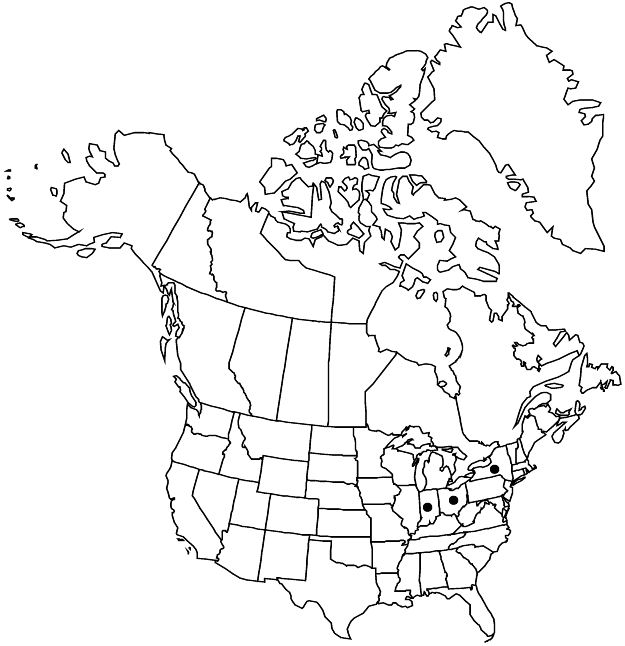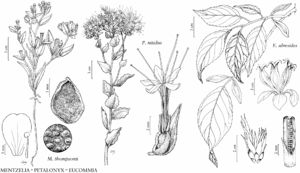Difference between revisions of "Eucommia ulmoides"
Hooker's Icon. Pl. 20: plate 1950. 1890.
FNA>Volume Importer |
FNA>Volume Importer |
Revision as of 19:19, 24 September 2019
Trees to 20 m; bark gray-brown, ridged and furrowed; branchlets brown, hairy when young, becoming glabrate, pith septate. Leaves: petioles 1–2.5 cm; blades elliptical to ovate, 5–20 × 2.5–8 cm, base usually truncate to broadly cordate or cuneate, sometimes oblique, apex acuminate, surfaces hairy when young, soon glabrate; latex strands visible in carefully torn leaf. Staminate flowers: anthers 10–12 mm. Pistillate flowers: pistil 10–12 mm. Samaras brown, 25–32 mm, apex emarginate. Seeds 12–15 × 3 mm. 2n = 34.
Phenology: Flowering (Mar–)Apr.
Habitat: Disturbed woods, fence rows.
Elevation: 200–300 m.
Distribution

Ind., N.Y., Ohio, Asia (China)
Discussion
Eucommia ulmoides, first reported as an escape in North America by M. A. Vincent (2002), has been put to many uses, including lumber, firewood, and a medicinal tonic (duzhong or tu-chung) made from the bark (T. Forrest 1995; D. J. Mabberley 2008; C. S. Sargent 1913–1917). Leaf and stem extracts have been shown to have potential medicinal value (H. J. Jeon et al. 1998; Y. Li et al. 1998; K. Metori et al. 1997, 1998; T. Nakamura et al. 1997; Y. Nakazawa et al. 1997). Eucommia ulmoides contains a latex (gutta-percha) that has been used in China for lining oil pipelines, insulating electrical lines, and filling teeth (Mabberley).
Eucommia ulmoides is sometimes used as a street or lawn tree. It is drought resistant, disease-free, and easily propagated by seed or cuttings; it is hardy in USDA Zones 4–7 (M. A. Dirr 1990; A. J. Rehder 1940).
Selected References
None.
